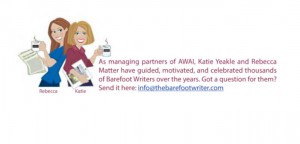When it comes to an email marketing campaign, the subject line of each email plays a key role. Your subject line needs to do several things:
- Hook your reader, so he or she will open the email and read it.
- Convey credibility, or your reader might delete it without a second glance.
- Be specific, so you don’t lose your target audience.
But you’ve got limited space to do all of this. So how do you write an email subject line that succeeds?
Here are five email subject line tips to keep in mind:
1. Know Your Limits — Use the 40-Character Rule
There’s nothing worse than sending out an email with a subject line that gets cut off on your reader’s email preview screen. I take that back… there is one thing worse — having it cut off right before a key word.
To reach the maximum number of readers in the most powerful way, keep your subject line short and punchy. (Example: “Retire This Year.”)
Remember, email subject lines generally won’t display past 40 characters. (It depends on each reader’s email program settings.) If you can’t help going over 40 characters, make sure the most important information is up front, so it will appear before the cutoff.
Finally, send a test email to yourself to see how your subject line looks. This won’t tell you how it will look for everyone, but it will give you a better idea.
2. Apply the 4 U’s©
Your email subject line is one of the most important parts of your email. To grab a reader’s attention it should be Urgent, Unique, Ultra-specific, and Useful. The most powerful subject lines combine two or three, or even all four of those elements.
For example, direct-marketing guru Denny Hatch has a great subject line for his e-zine that was sent out a while back. It read “About the First Paragraph of Your Obituary… ” Check that against the 4 U’s. It’s definitely unique. Anything about your own mortality is urgent. The “First Paragraph” makes it specific. It may even be useful — I can’t wait to read it and find out.
That’s exactly how you want your readers to feel.
3. Draw on your “Big Idea”
The promotion you’re sending is built around a “Big Idea”… or at least it should be. Take that idea — your biggest benefit, your most powerful promise, your USP — and use it to craft your subject line.
As an example, “Write Better Copy in One Hour” works better than “Write Copy That Sells.” The Big Idea is that you can improve your copy fast… not simply that you can improve your copy.
4. Keep It Honest
The promise you make in your subject line should come through loud and clear in your body copy. Don’t make a big promise that you can’t deliver on in the promotion or that you can’t write convincing copy to support.
For example, “Make $12,000 in the Next Hour,” might get your reader’s attention… but if you don’t deliver, you’ll lose their trust.
Be honest with your reader and write authentic copy.
5. Build on the Relationship
When you market through email, you’re marketing to people who have given you permission to communicate with them. That’s a powerful thing. Build on that relationship.
If it’s appropriate, use your subject line to tie in to or reference previous emails you’ve sent. This builds a sense of continuity and familiarity with your reader… and that builds trust.
For instance, if last week you sent an email with the subject line, “How Google Can Grow Your Business”… this week, you might tie back to that with a subject line like, “Google AdSense Made Me $450 Last Week.” This carries on the conversation.
Email is a powerful marketing channel, but it can also be difficult to get your reader to take that first step and open your message. Use these guidelines to help improve your readership rates.
Oh, and here’s one more email subject line tip…
Study what works.
There are no hard and fast rules, no magic formulas for crafting a subject line that’s guaranteed to work. Remember to study what’s working in your field, and use what you learn to make your email subject lines more powerful and effective.
By following these email subject line tips, your emails will stand a much better chance of getting opened and being read.





